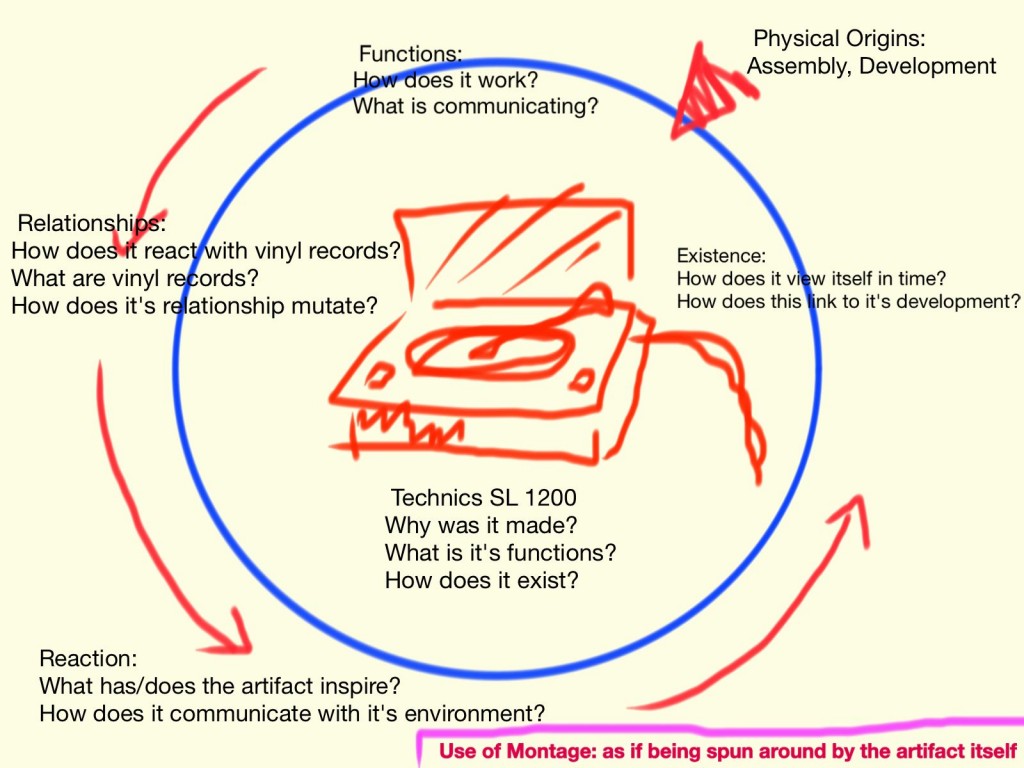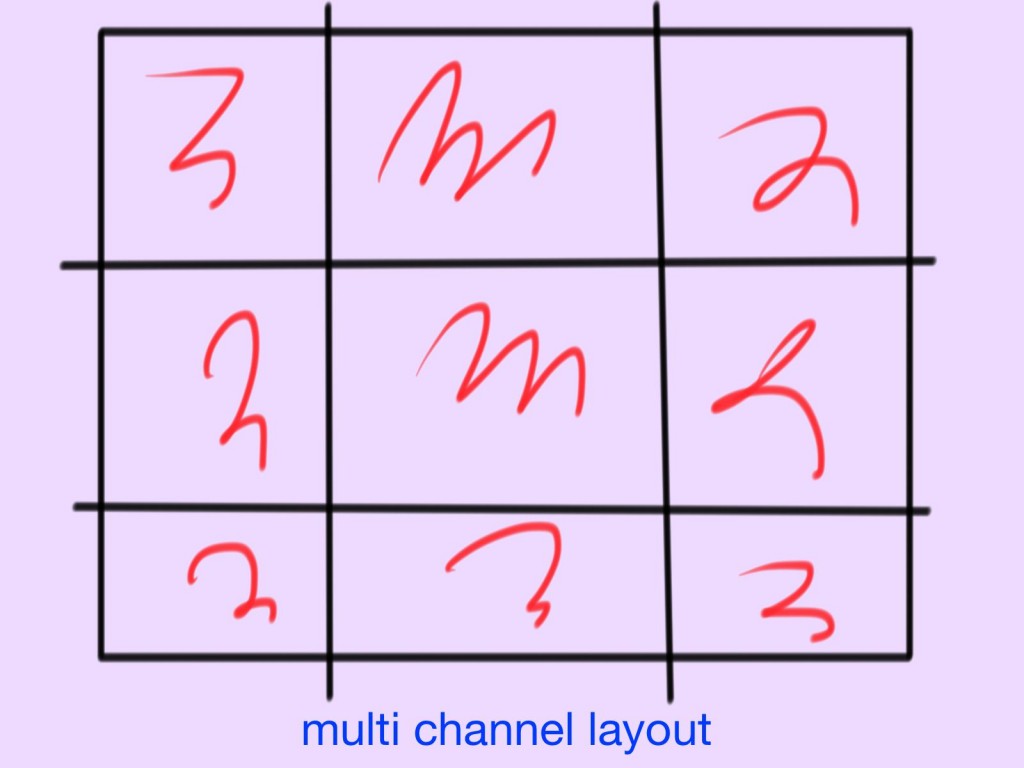 From what I understand and know, I’m a visual learner. You could dictate to me a thousand times the process of something, but unless I see it being executed or put it to paper, the chances are I’ll forget. In the beginning of trying to understand why and how ontographs exist, I was very caught up with the idea of linearity.
From what I understand and know, I’m a visual learner. You could dictate to me a thousand times the process of something, but unless I see it being executed or put it to paper, the chances are I’ll forget. In the beginning of trying to understand why and how ontographs exist, I was very caught up with the idea of linearity.
If ontographs describe media artifacts that are (well, in essence) non-linear, then how do we as media makers begin to explore that within the many linear forms we synonymously communicate with? Pages have edges, starts and finishes. Posters have corners and a limited space. Words drown in their own meaning and structure. With this, I began to brainstorm.
Inspired by the idea of the montage and the aesthetics presented by Frankham, I began exploring the possibilities of the editing device and the singularity it could provide. Although a video has a start and a finish, with the use of montage, it would be as if the artifact was being spun around itself, questioning the impact of the screen and what is being shown. I soon drew up an idea and started hunting down footage.
Since I had no access to a Technics SL 1200, I began watching clips of the object being pulled apart, used, transported, fixed and ways in which it reacted with cultural events, vinyl records, people, DJ’s, music, space, tones and environments.
As I began to collect the footage, I investigated the possibilities of a multichannel display montage, segregated into four parts: the internal processes, the functionality of it’s parts, the reasons and relationships it mutates and the environments, cultures and humans it affects and influences.
Then, I began to make.

